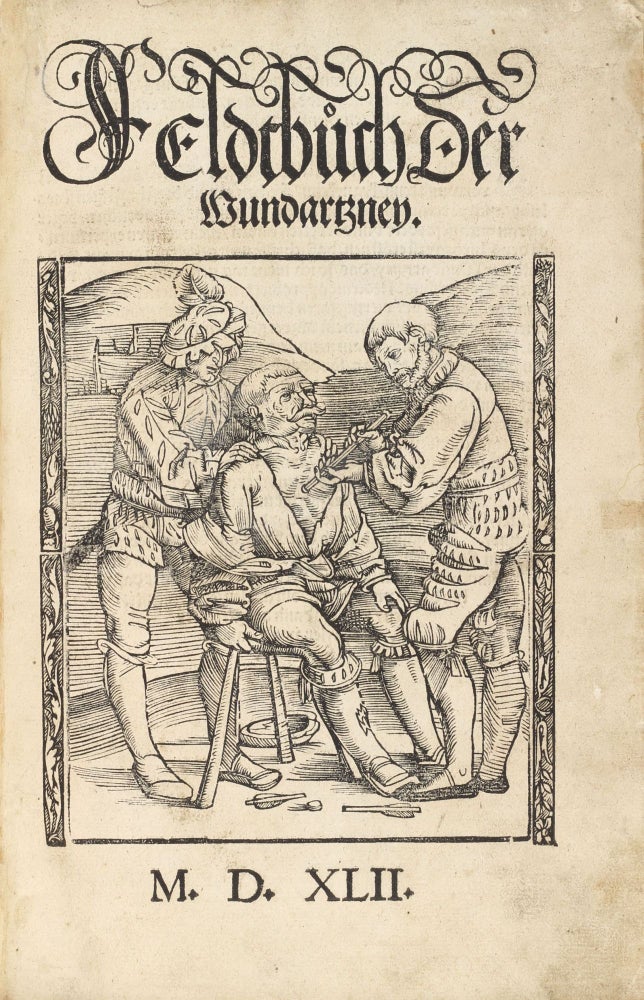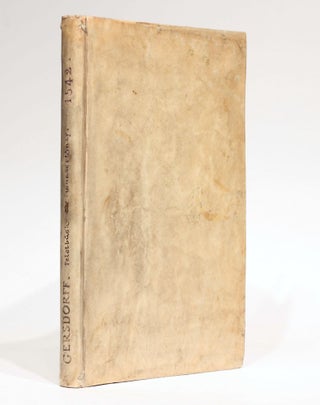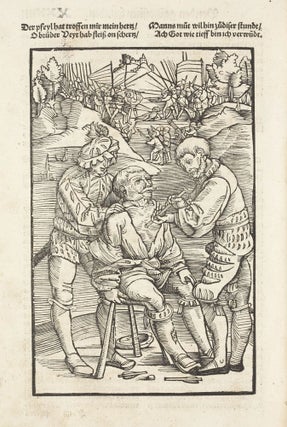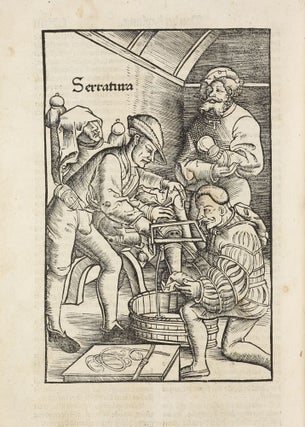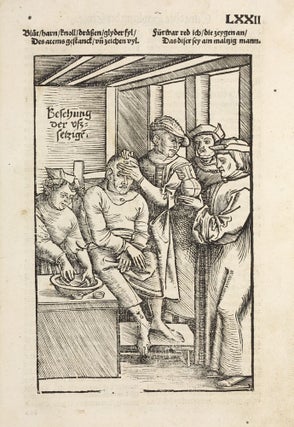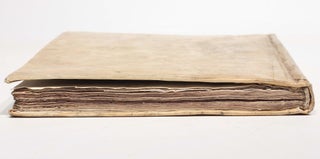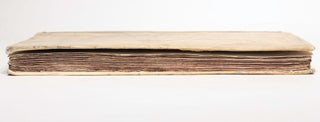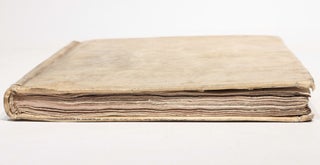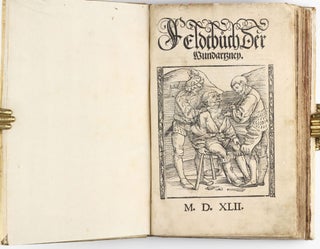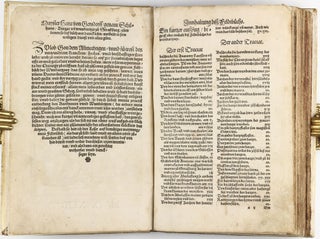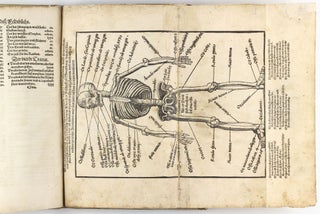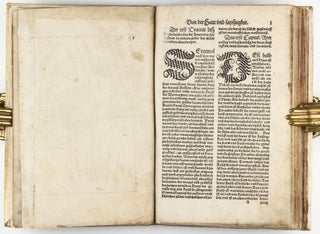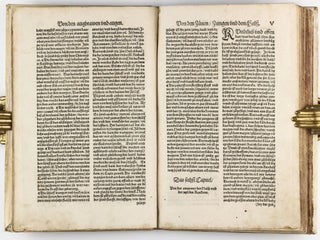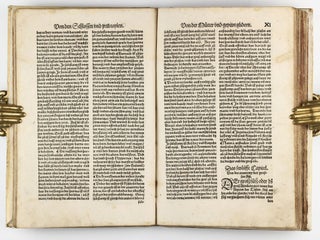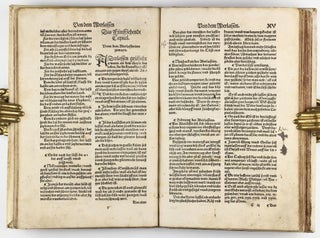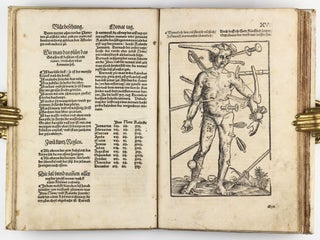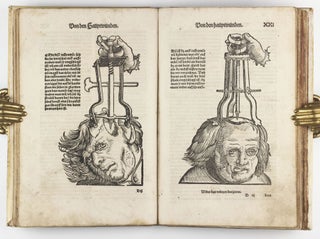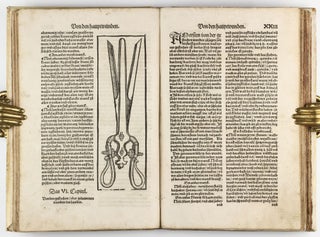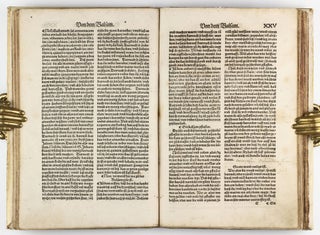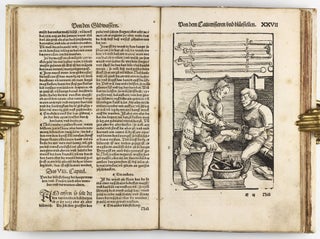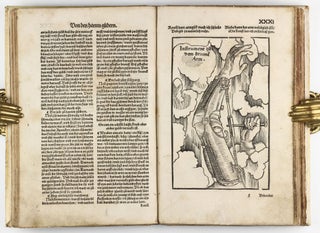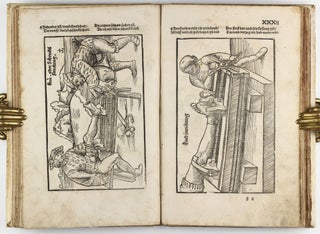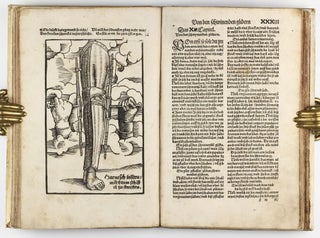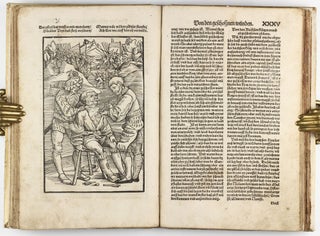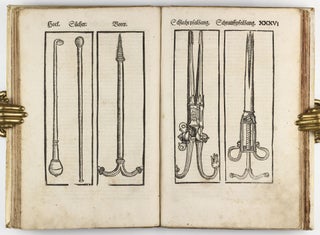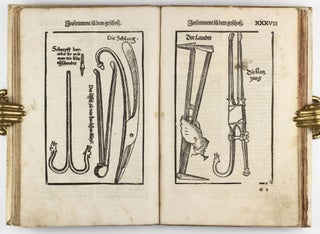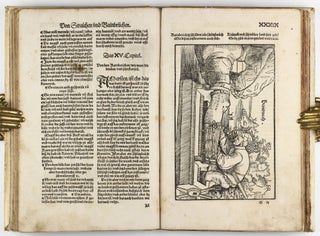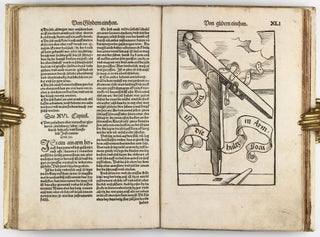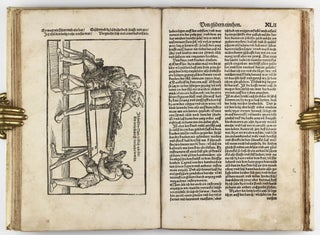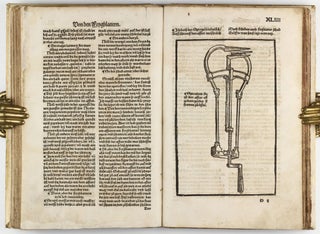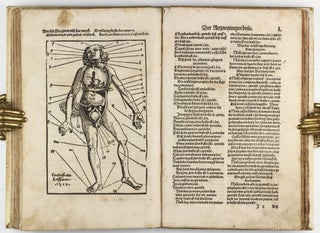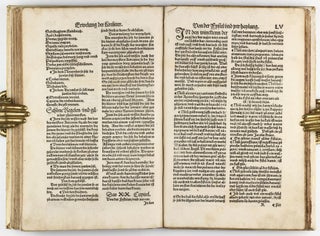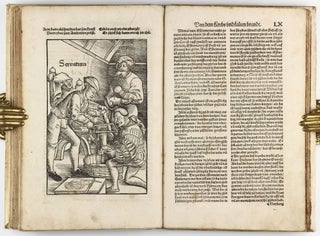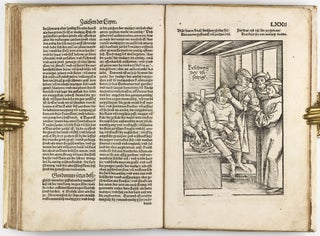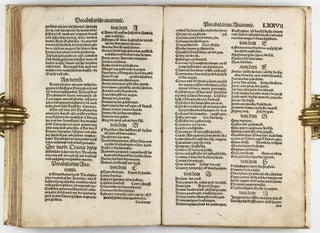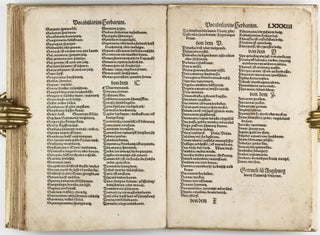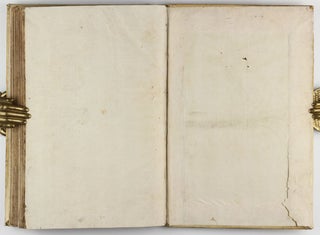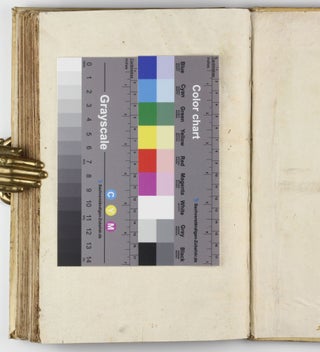Feldtbuch der Wundtartzney.
Augsburg: Heinrich Stayner, 1542.
3rd Edition. Hardcover. Very Good. Item #003596
Folio (285 x 190 mm). 88 leaves, ff. [4], LXXXIIII. Double column text in Fraktur type. 24 large woodcut illustrations, mostly full page, attributed to Hans Wechtlin, the first on the title-page, one inserted woodcut plate printed as broadside on full sheet and bound in as folding plate after f. a4. Signatures: a4 A-O6. Bound in 17th-century restored vellum, spine with later hand-lettering (vellum soiled and spotted, slight wear to corners). Minor browning and spotting internally, some occational finger soiling, short marginal tears, f. A1 with clean tear at upper margin repaired, ink smudge to f. C3. A few old ink annotations. A very good copy. ----
EXCEPTIONALLY RARE THIRD Augsburg edition (the others undated around 1530 and 1532 after VD 16). The original edition was published in 1517 by Johann Schott in Strassburg, who also published the two following prints (1526 and 1528). The work went through at least twelve editions between the time of its first publication and the early seventeenth century. VD16 lists 14 editions in the 16th century.
The book is written on the basis of Gersdorff's 40 years experience as a military surgeon. A summary of the available knowledge of human anatomy derived from old Arabic writings, Guy de Chauliac, and other sources is followed by a guide to the surgical treatment of wounds, with a subsidiary part on the treatment of leprosy, followed by three Latin-German glossaries at the end - one of anatomic terms, one of diseases, and one of simples. "The book [. . .] was translated into Latin and Dutch, and was widely quoted, referred to, and plagiarised in subsequent medical texts. Eminently practical in its instructions on the care and treatment of the wounded, it had admirably graphic wood engravings. The twenty-seven illustrations show clear diagrams of instruments and protheses, such as a mechanical iron-hand, in addition to scenes of operations, including the first printed picture of an amputation. Several illustrations, such as of the ambe, became standard in subsequent German surgical texts. The full-sheet anatomical skeleton existed in its own right as a broadside print and is often missing. (William Lefanu, Notable Medical Books from the Lilly Library, p. 19). Herrlinger comments that "The illustrations . . . belong to the early phase of 16th-century medical illustration and represent one of its high points" (History of medical illustration, London, 1970. p. 142).
"Gersdorff [. . .] had gained wide experience during the course... of campaigning and was an expert in the care and treatment of battlefield injuries [. . .] [He] emphasized a well-founded knowledge of anatomy because the surgeon was frequently called upon to deal with extensive bodily trauma [. . .] The surgical portion of the work was devoted to wound surgery and covers in some detail the methods he employed for extracting foreign objects and amputating limbs. He used a tourniquet to control bleeding when amputating and covered the stump with the bladder of a bovine or swine to help control postoperative hemorrhaging. He also included information on various remedies and medications that might be employed by the surgeon. Of special interest are the sedatives and analgesics, although he appears not to have employed them in his practice. The section on leprosy is given over largely to remedies for a disease he did not believe could be cured" (Heirs of Hippocrates 149).
Bibliography: VD 16, G 1626 (two locs only); this edition not in NLM/Durling, Wellcome or Waller; for 1st edition see Grolier/Norman Medicine 14; NLM/Durling 2059 (incomplete); VD-16 G-1618; Choulant, pp. 162-66; Garrison & Morton 5560; Stillwell 387; Lilly Library, p.19; Herrlinger, History of Medical Illustration, pp. 140-43; Waller 3506. Heirs of Hippocrates 149 (1530 edition). - Visit our website to see more images!
Price: 28,000 € * convert currency
Delivery time up to 10 days. For calculation of the latest delivery date, follow the link: Delivery times
Lieferzeit max. 10 Tage. Zur Berechnung des spätesten Liefertermins siehe hier: Lieferzeiten


